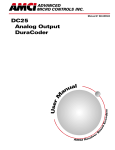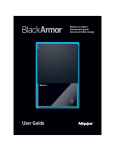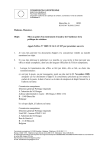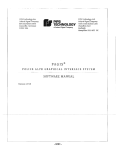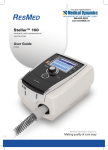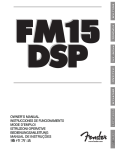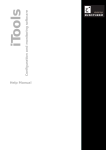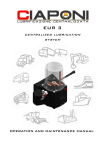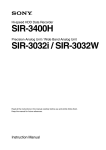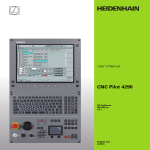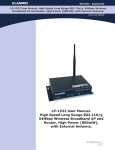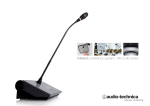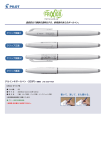Download JCM WBA Service Manual
Transcript
WORLD BILL ACCEPTOR WBA-24-SS2 WBA-25-SS2 Model Numbers Specifications 1. Model Classification How to read the Model Classification Number Model Numbers WBA - * * - SS(2) - * * * (*) - * * * - * * (1) (2)(3) (4) (5) (6) (7)(8)(9) (1) WBA Bill Acceptor (7) Cash Box Capacity 4 - 400 notes 5 - 500 notes (standard) A - 1,000 notes (2) Type of acceptor head 1 - 1x head (magnetic sensors enhanced) 2 - 2x head (optical sensors enhanced) (8) Faceplate 0 - without faceplate (standard) 1 - with faceplate (3) Type of CPU board 0 - EPROM (1M) 1 - Flash ROM (1M) 2 & 4 - Flash ROM (4M) 3 & 5 - EPROM (4M) (4) Type of Cash Box SS - SS Down Stacker (80mm width) SS2 - SS2 Down Stacker (82mm width for Euro banknotes) (6) Denominations to be accepted (Example) Euro banknotes Denomination Country Code * * * * * * * * * * * * * * * * * * * (9) Guide Width 1 - 66mm 2 - 70mm 3 - 76mm 4 - 80mm 5 - 82mm (10) Interface 01 - ID001: Parallel Interface 02 - ID002: Pulse Interface 03 - ID003: Bidirectional Serial Interface (standard) 44 - ID044/045: Serial & Pulse Interface 0A2 - ID-0A2: Serial & Pulse Selectable Interface (5) Country Code EUR1 EUR2 EUR3 EUR4 EUR5 (10) * * * * * Contact JCM for other I/F. * EXAMPLE WBA-25-SS2-EUR5-505-03 WBA model bill acceptor for Euro banknotes accepting up to 500 Euro, with 2x head, EPROM, SS2 stacker, 500-note cash box, 82mm width bill guides and ID-003 I/F without faceplate. Page 1 2. General Specifications Refer to the software specifications of each unit. Refer to the software specifications of each unit. 90% or more (Including the 1st return and 2nd acceptance. The following bills, however, are excluded.) a) Dirty, worn, wet, torn, or extremely wrinkled bills. b) Bill with a folded corner or edge. c) Bill with a noticeable cutting size difference or printing displacement. Within 2 seconds (Time until the output of the vend signal.) ID-003 bi-directional serial interface (Photocoupler isolation) Security (lockable) box Capacity --- Average 500 bills (Coupons) The lock shall be installed by a user (the catch is supplied with the unit.) One bill or one barcode coupon DC +12V (+-5%), capacity 2.5A or more Standby status --- 2.8VA Operation status --- 14VA (MAX. 24VA) Operating temperature --- 0 oC to 45 oC Storage temperature --- -20 oC to 60 oC Relative humidity --- 30% to 80% No direct sunlight Refer to the drawing below. Main unit(with cash box)--- Approx. 4.8 Kg Cash box alone --- Approx 1.5 Kg Horizontal and indoor installation Validation Time: Standard Interface: Cash box: Note: Escrow: Power requirements: Power consumption: Environment: Outside dimensions: Weight: Installation: MODEL NUMBERS SPECIFICATIONS Accepted Bill Denominations: Bill insertion: Acceptance rate: +0.0 0 2.55 87 93 104.4 3. Dimensions 4.2 6.6 49.8 9.2 6.6 9.2 6.6 27 6.6 225 67 22.2 67 45.8 21.5 50 3.5 2 2-M7 298 155 267 30 202 303.8 6-M4 278 21 10.5 6.6 114 100 100 30 150 Page 2 WBA-12-SS WBA-13-SS WBA-22-SS WBA-23-SS WBA-24-SS2 WBA-25-SS2 Operation Manual OPERATION MANUAL WORLD BILL ACCEPTOR 1. Features ........................................................................................................................ P1 2. Component Names ....................................................................................................... P1 3. DIP Switch Setting ........................................................................................................ P2 4. Installation ..................................................................................................................... P2 5. Input/Output Circuits ..................................................................................................... P3 6. Cabling .......................................................................................................................... P3 7. Pin Assignment ............................................................................................................ P4 8. Operation Flowchart ...................................................................................................... P5 9. Retrieving Bills .............................................................................................................. P6 10. Clearing Bill Jam ......................................................................................................... P6 11. Preventive Maintenance .............................................................................................. P7 OPERATION MANUAL Contents 1. Features The WBA has the following features. · Able to read a wide range of bill sizes Four types of bill guides are available for the WBA. Switching the bill guides allows the unit to read bills ranging from 62mm to 82mm wide. The length of bills read are from 125mm to 170mm. 62mm - 82mm OPERATION MANUAL · DIP switch settings to accept/reject bills Up to 7 denominations are accepted. Accept / reject of each denomination is Dipswitch selectable. · Easy bill retrieval The cash box can be detached from the main unit to withdraw deposited bills. The machine can be equipped with a lock for higher security. Each SS and SS2 cash box stores up to 500 bills. 2. Component Names Transport unit Acceptor head Bill insertion slot Acceptor head release lever Transport unit release lever Cash box release lever Cash box Page 1 3. Dipswitch Settings OPERATION MANUAL Verify the software in the WBA before installing it. The DIPswitch settings are determined by the software. See software specifications proivded separately for DIPswitch settings of your software. OFF 1 2 3 4 5 6 7 8 4. Installation 1. Installation There are three mounting holes on each side (a total of six mounting holes). 2. Switching the bill guides Unless your WBA has been used with another software before, correct bill guides should be installed in the acceptor unit . Each software has designated bill guide types (ex. USA = 66mm width = Type 1 Bill Guide, EUR5 = 82mm width = Type 5 Bill Guide). Refer to the software specification to find which bill guide should be installed. To remove the bill guides, first remove the acceptor head from the main unit and then push out the bill guides from the back of the acceptor head with a Phillips-head screwdriver. To install the bill guides, push the guides into the acceptor head slot from the front until you hear a click. Be sure to push the guides in the correct direction. Page 2 OPERATION MANUAL 5. Input/Output Circuits 6. Cabling External harness External connector Socket DR1-12-2SCFO(JAE) Contact DR-SC24-7000(JAE) External connector (CN1) Housing 51030-0230(MOLEX) Contact 50083-8 14(MOLEX) (AWG #24~#30) * External connector (CN2) Housing 51030-0530(MOLEX) Contact 50083-8 14(MOLEX) (AWG #24~#30) External connector (CN3) Housing 51030-0430(MOLEX) Contact 50083-8 14(MOLEX) (AWG #24~#30) * * Page 3 7. Pin Assignment - ID-003 I/F (Standard) CN 1 4 3 2 1 CN 3 4 Connector Function DC +12V power supply Ground Pin No. 1 2 3 4 5 Signal Name M. RES TXD + 12V RXD GND Function Acceptor reset signal Data transmission Interface Power supply (DC+12V) Data reception Ground Pin No. 1 2 3 4 Signal Name LED + LED NC NC Function LED drive (anode) LED drive (cathode) Reserved Reserved 1 CN 2 5 Signal Name + 12V GND 3 2 1 1 7 14 20 Pin No. 1 2 3 4 5 6 7 8 9 10 11 12 13 14 15 16 17 18 19 20 Signal Name + 12V GND M. RES TXD + 12V RXD GND NC NC NC NC NC GND LED + NC NC NC LED NC NC OPERATION MANUAL 2 Pin No. 1 2 Function DC +12V power supply Ground Acceptor reset signal Data transmission Interface Power supply (DC+12V) Data reception Ground Do not use this pin Do not use this pin Do not use this pin Do not use this pin Do not use this pin Ground LED Drive (Anode) Do not use this pin Do not use this pin Do not use this pin LED Drive (Cathode) Do not use this pin Do not use this pin Page 4 8. Operation Flowchart - ID-003 I/F (Standard) POWER ON CPU.ROM.RAM TEST NO OK YES TEST MODE YES STOP NO VALI.STACKER TEST TEST MODE NO OK YES A UNEXPECTED SENSOR ON NO ENABLE YES REJECT NO YES NO(JAM) OK LED ON NO OPERATION MANUAL STAND-BY LED OFF BILL INSERTED YES A YES A MOTOR FWD DATASAMPLING START ILLEGAL DATA/CONDITION YES NO SAMPLING END YES MOTOR STOP VALIDATE SAMPLING DATA NO INHIBIT CONDITION YES OK B NO BILL REJECT CREDIT OUTPUT BILL FEED OUT TO STACKER FEED OK OK NO VEND OUTPUT YES BILL REMOVED NO YES FULL ON A LED OFF B FULL BILL STACK STACK COMPLETE NO(JAM) NO A LED OFF STOP Page 5 1. Push the release lever down and pull the cash box forward. OPERATION MANUAL 9. Retrieving Bills 2. Open the cash box cover and remove the bills. 10. Clearing Bill Jam 1. Pull the tabs on both sides of the acceptor forward to open the acceptor head. Remove the jammed bill. 2. If the jammed bill cannot be removed by opening the acceptor, pull the transport unit open/close lever to open the transport cover and remove the jammed bill. Page 6 OPERATION MANUAL 3. When a bill is jammed near the inlet of the cash box, push the release lever down to pull out the cash box and remove the jammed bill. 11. Preventive Maintenance It is important to keep the bill path, rollers, and belts clean. The sensor lenses are transparent, and made of polymer material. Handle them with care. To clean the lenses, use a lint-free cloth and mild non-abrasive detergent such as liquid dish soap mixed with water. Do not use alcohol or thinner for cleaning. Note: JCM does not recommend cleaning cards, cleaning pads, or cleaning solutions of any kind. Cash box Preventive Maintenance (P/M) Do periodic P/M on the cash boxes to ensure proper operation. Use compressed air to blow out the paper fibers and other debris that builds up over time. Check the belts and all moving parts for wear and proper positioning. If the unit does not operate properly, it can cause bill jams. After completing the P/M, Auto-Calibration is recommended (Refer to Chapter 7). Page 7 ID-003 Communication Specifications COMMUNICATION SPECIFICATIONS WORLD BILL ACCEPTOR WBA-12-SS WBA-13-SS WBA-22-SS WBA-23-SS WBA-24-SS2 WBA-25-SS2 Contents 1 2 3 4 5 6 Outline ............................................................................................................................. 1 Transmission specifications ............................................................................................. 1 Transmission, reception message format ......................................................................... 2 Communication flow ......................................................................................................... 3 Command/response list ................................................................................................... 5 Command/response details ............................................................................................. 6 6-1 Status request (CONTROLLER ACCEPTOR) .................................................... 6 6-2 Status (ACCEPTOR CONTROLLER) ................................................................. 6 6-2-1 Nomal status (ACCEPTOR CONTROLLER) ............................................. 6 6-2-2 Power up status (ACCEPTOR CONTROLLER) ........................................ 9 6-2-3 Error status (ACCEPTOR CONTROLLER) ............................................. 10 6-3 Operation command (CONTROLLER ACCEPTOR) ......................................... 10 6-4 ACK (Affirmative response) ..................................................................................... 11 6-5 Seetting command (CONTROLLER 6-6 Setting status request (CONTROLLER ACCEPTOR) ........................................... 12 ACCEPTOR) ....................................... 13 7-2 Accepting of bills ..................................................................................................... 19 7-3 Rejection of bills by validating .................................................................................. 22 7-4 Returning of bills by [ RETURN ] command ............................................................... 23 7-5 Inhibit of accepting by acceptor ................................................................................ 24 7-6 Stacker full (STACK-1)............................................................................................. 25 7-7 Bill jamming when returning ...................................................................................... 26 COMMUNICATION SPECIFICATIONS 6-7 Data (Setting status/setting command) .................................................................... 15 7 Timing chart ................................................................................................................... 17 7-1 Power up ................................................................................................................. 17 ID-003 Communication specifications 1 Outline This specification describes specifications at the data level of interfacing between the ACCEPTOR and CONTROLLER. In regard to electrical connections and operation, refer to the specification manuals for each model. ID-003 interface is a 2-way serial interface. Control over the status and operation of the ACCEPTOR is made by polling [STATUS REQUEST] and by commands ([OPERATION COMMAND] [SETTING COMMANDS]) from the CONTROLLER and also setting and confirming of functions can be made. 2 Transmission specifications (1) Transmission method (2) Transmission speed Full duplex transmission 9600 bps/19200 bps (Depending on the model, setting by DIP switches is possible.) Asynchronous method Polling method Start bit 1 Data bit 8 Parity bit EVEN Stop bit 1 X parameter None (3) Synchronizing method (4) Connection control method (5) Data fornat SYNC LNG SYNC 1 byte LNG 1 byte CMD 1 byte DATA 0 to 250 byte CRC 2 byte (7) Error control method CMD : : : : : DATA COMMUNICATION SPECIFICATIONS (6) Message format CRC Message transmission start code [FCH] fixed Data length (Total number of bytes from SYNC to CRC) Command status Data necessary for command (omitted by CMD) Check code by CRC method Object secion to be from SYNC to end of DATA (Inttial value = 0) Error detection CRC method CRC - CCITT P(x) = X16+X12+X5+1 Page 1 3 Transmission, reception message format Transmission and reception message format is divided into the following five types. (1) Polling format (CONTROLLER LNG CMD CRC SYNC : [FCH] LNG : [05H] CMD CRC : : [11H] (Status request) Check code by CRC method (2) ACK format (CONTROLLER SYNC LNG ACCEPTOR/ACCEPTOR CMD CRC SYNC LNG CMD : : : [FCH] [05H] [50H] CRC : Check code by CRC method (3) Command format (CONTROLLER SYNC LNG CONTROLLER) ACCEPTOR) CMD DATA CRC SYNC LNG : : [FCH] Data length CMD DATA CRC : : : Command Data necessary for command (Omitted by CMD) Check code by CRC method (4) Response format I (ACCEPTOR SYNC SYNC LNG SST CRC LNG : : : : CONTROLLER) SST CRC [FCH] Data length Status code Check code by CRC (5) Response format II (ACCEPTOR SYNC COMMUNICATION SPECIFICATIONS SYNC ACCEPTOR) LNG CONTROLLER) CMD DATA CRC SYNC : [FCH] LNG CMD : : Data length Response DATA CRC : : Data necessary for command (Omitted by CMD) Check code by CRC method Page 2 4 Communication flow (1) Transmission of STATUS REQUEST CONTROLLER ACCEPTOR [STATUS REQUEST] Polling frequency 100ms to 200ms STATUS Respons time within 50 ms (2) Transmission command to ACCEPTOR CONTROLLER ACCEPTOR OPERATION COMMAND [ACK] Respons time within 50 ms (3) Communication error 1 (Failure of communication system and power source OFF, failure etc. of acceptor) CONTROLLER ACCEPTOR [STATUS REQUEST] STATUS [STATUS REQUEST] STATUS *)No response within 50 ms, or transmission made again to ACCEPTOR for 3 seconds but no response received. Communication error 2 (Failure etc. of communication system) CONTROLLER ACCEPTOR [STATUS REQUEST] *)ACCEPTOR unable to receive data within 200 ms. COMMUNICATION SPECIFICATIONS [STATUS REQUEST] Communication error 3 CONTROLLER ACCEPTOR [STATUS REQUEST] [COMMUNICATION ERROR] [STATUS REQUEST] *)CRC error, loss of data etc. occurs. [COMMUNICATION ERROR] Communication error 4 CONTROLLER ACCEPTOR OPERATION COMMAND [INVALID COMMAND] OPERATION COMMAND *)Improper command received in processing action of ACCEPTOR. [INVALID COMMAND] Page 3 5 Command/response list RESPONSE TO [VEND VALID] ACK OPERATION COMMAND RESET STACK-1 STACK-2 RETURN HOLD WAIT SETTING COMMAND ENABLE/DISABLE (DENOMI) SECURITY (DENOMI) INHIBIT (ACCEPTOR) DIRECTION OPTIONAL FUNCTION SETTING STATUS REQUEST ENABLE/DISABLE (DENOMI) SECURITY (DENOMI) INHIBIT (ACCEPTOR) DIRECTION OPTIONAL FUNCTION VERSION REQUEST BOOT VERSION REQUEST 11H ACCEPTOR CONTROLLER STATUS ENABLE (IDLING) ACCEPTING ESCROW STACKING VEND VALID STACKED REJECTING RETURNING HOLDING DISABLE (INHIBIT) INTIALIZE POWER UP STATUS POWER UP POWER UP WITH BILL IN ACCEPTOR POWER UP WITH BILL IN STACKER ERROR STATUS STACKER FULL STACKER OPEN JAM IN ACCEPTOR JAM IN STACKER PAUSE CHEATED FAILURE COMMUNICATION ERROR 11H 12H 13H+DATA 14H 15H 16H 17H+DATA 18H 19H 1AH 1BH 40H 41H 42H 43H 44H 45H 46H 47H 48H 49H+DATA 4AH 50H 40H 41H 42H 43H 44H 45H C0H+DATA C1H+DATA C3H+DATA C4H+DATA C5H+DATA 80H 81H 83H 84H 85H 88H 89H COMMUNICATION SPECIFICATIONS CONTROLLER ACCEPTOR STATUS STATUS REQUEST RESPONSE TO OPERATION COMMAND 50H ACK 4BH INVALID COMMAND RESPONSE TO SETTING COMMAND ENABLE/DISABLE (DENOMI) SECURITY (DENOMI) INHIBIT (ACCEPTOR) DIRECTION OPTIONAL FUNCTION SETTING STATUS ENABLE/DISABLE (DENOMI) SECURITY (DENOMI) INHIBIT (ACCEPTOR) DIRECTION OPTIONAL FUNCTION VERSION INFORMATION BOOT VERSION REQUEST C0H+DATA C1H+DATA C3H+DATA C4H+DATA C5H+DATA 80H+DATA 81H+DATA 83H+DATA 84H+DATA 85H+DATA 88H+DATA 89H+DATA Page 4 6 Command/response details 6-1 STATUS REQUEST (CONTROLLER ACCEPTOR) Request from CONTROLLER to ACCEPTOR on status of ACCEPTOR By the [STATUS REQUEST], the CONTROLLER monitors operation status, resetting from error status etc. of the ACCEPTOR. Response : Status response [11H] : STATUS REQEST 11H a. Frequency of polling shall be 100 msec to 200 msec. b. Response time of the ACCEPTOR shall be within 50 msec. c. The CONTROLLER must resend the message in case a communication error response is received and when a response is not received within 200 msec. (Refer to 4-(3)) 6-2 STATUS (ACCEPTOR CONTROLLER) Response in reply to [STATUS REQUEST] from the CONTROLLER Expresses the present status of the ACCEPTOR which is normally divided into normal status, power-up status and error status. 6-2-1 Normal status (ACCEPTOR CONTROLLER) (1) [11H] : ENABLE (IDLING) COMMUNICATION SPECIFICATIONS 11H Bill accepting standby and operation able status (2) [12H] : ACCEPTING 12H Status in which bills are taken in and validating is being conducted Page 5 (3) [13H] : ESCROW 13H DATA Status in which bill validation is completed and command from the CONTROLLER is awaited (The bill is held inside the ACCEPTOR). [ESCROW DATA] (accepted denomination) of 1 byte is added. If [STATUS REQUEST] cannot be received from the ACCEPTOR within 3 seconds while in the [ESCROW] status, and when an operation command from the CONTROLLER is not transmitted within 10 seconds after transmission, the bill is returned. ESCROW DATA (Accepted denomination) DATA Denomination 61h 01 62h 02 63h 03 64h 04 65h 05 66h 06 67h 07 68h 08 ) The accepted denominations are described in the [DATA setting specifications] * for each model. (4) [14H] : STACKING Status in which bills are conveyed to the stacker and stored in accordance with OPERATION COMMANDs [STACK-1] and [STACK-2] from the CONTROLLER. (Refer to 6-3, 7-2) (5) [15H] : VEND VALID 15H Confirming signal of bill acceptance Against [VEND VALID], the ACCEPTOR holds its status until [ACK] is sent from the CONTROLLER. The CONTROLLER conducts credit up by [VEND VALID]. (Refer to 7-2) (6) [16H] : STACKED 16H Status from the time bill is stored up to the time accepting of the next bill from [VEND VALID] becomes possible ([ENABLE] status). Page 6 COMMUNICATION SPECIFICATIONS 14H (7) [17H] : REJECTING 17H DATA A Status in which unacceptable bills as the result of bill validating by the ACCEPTOR or bills by an [INHIBIT] command from the CONTROLLER are returned. (Refer to 7-3) [REJECT DATA] (description of rejection) of 1 byte is added. REJECT DATA (Rejection description) DATA Description 71h Insertion error 72h Mag srror 73h Rejection action by remaining of bills etc. (ACCEPTOR head section) 74h Compensation error multiplying factor error 75h Conveying error 76h Denomination assessing error 77h Photo pattern error 1 78h Photo level error 79h Return by inhibit/insertion direction, denomination error In case a command against escrow is not transmitted 7Ah 7Bh Operation error 7Ch Rejecting action by remaining of bills and such (stacker section) 7Dh Length error 7Eh Photo pattern error 2 (8) [18H] : RETURNING Against [ESCROW], a status in which a bill is returned by a [RETURN] command from the CONTROLLER. (Refer to 7-4) (9) [19H] : HOLDING 19H Against [ESCROW], a status in which a bill is held inside the ACCEPTOR by a [HOLD] command from the CONTROLLER. (10) [1AH] : DISABLE (INHIBIT) 1AH A Status in which acceptance of bills by the ACCEPTOR is inhibited by a [INHIBIT] command from the CONTROLLER.(Refer to 7-5) Also a status in which all acceptable denominations are in a disable status by [ENABLE/DISABLE] command or where all receiving directions are in an inhibit status by a [DIRECTION] command. Page 7 COMMUNICATION SPECIFICATIONS 18H (11) [1BH] : INITIALIZE 1BH Status in which the ACCEPTOR is conducting initializing action by [RESET] from the CONTROLLER. The setting command from the CONTROLLER is effective only in this status. (Refer to 7-1) 6-2-2 Power up status (ACCEPTOR CONTROLLER) By the power supply ON status, the ACCEPTOR returns the following status. Also, this status is held until a [RESET] command is sent from the CONTROLLER. (Refer to 7-2) (1) [40H] : POWER UP 40H A status in which status inside the ACCEPTOR is normal with the ACCEPTOR power on (2) [41H] : POWER UP WITH BILL IN ACCEPTOR 41H A status in which bills remain in the ACCEPTOR head conveying section (a return possible position) with the power supply on. By a [RESET] command from the CONTROLLER, the ACCEPTOR returns the bill and conducts initializing. (3) [42H] : POWER UP WITH BILL IN STACKER A status in which bills remain in the stacker conveying section (a return possible position) with the power supply on. By a [RESET] command from the CONTROLLER, the ACCEPTOR stores the bill and conducts initializing. Page 8 COMMUNICATION SPECIFICATIONS 42H 6-2-3 Error status (ACCEPTOR CONTROLLER) Method for releasing error status differs by model. For details, refer to the [Specification manual] and [DATA setting specification manual] by model. (1) [43H] : STACKER FULL 43H A stacker box full condition (Refer to 7-6) (2) [44H] : STACKER OPEN (STACKER BOX REMOVE) 44H The stacker door is open or the stacker box is not mounted. (3) [45H] : JAM IN ACCEPTOR 45H Jamming has occurred inside the ACCEPTOR. (4) [46H] : JAM IN STACKER 46H (5) [47H] : PAUSE 47H A condition in which the ACCEPTOR cannot operate because a second bill has been inserted while the first bill is being stored or conveyed (When the second bill is removed, conveying is started.) (6) [48H] : CHEATED 48H An action thought to be mischievous against the ACCEPTOR has been committed. Page 9 COMMUNICATION SPECIFICATIONS Jamming has occurred in the stacker conveying section. An abnormal condition has developed at the time of storing. (7) [49H] : FAILURE 49H DATA A status in which normal operation cannot be made because of a failure, an abnormal condition, or incorrect setting of the ACCEPTOR. [FAILURE DATA] of 1 byte are added. FAILURE DATA ( abnormal contents ) DATA Contents A2h Stack motor failure A5h Transport ( feed ) motor speed failure A6h Transport ( feed ) motor failure ABh Cash box not ready AFh Validator head remove B0h Boot ROM failure B1h External ROM failure B2h ROM failure B3h External ROM writing failure (8) [4AH] : COMMUNICATION ERROR 4AH An error has developed in the communication data. (Refer to 4-(3)- 3 ) (9) [4BH] : INVALID COMMAND COMMUNICATION SPECIFICATIONS 4BH Command from the CONTROLLER is not valid. (Refer to 4-(3)- 4 ) 6-3 OPERATION COMMAND (CONTROLLER ACCEPTOR) Operation command from the CONTROLLER to the ACCEPTOR Response : ACK response (1) [40H] : RESET 40H A command for resetting the ACCEPTOR. The ACCEPTOR accepts this command regardless of its status. After the power supply is turned on (power up status), transmission is required without fail. (2) [41H] : STACK-1 41H A bill in an escrow status is conveyed to the stacker section and stored. The ACCEPTOR becomes in a [VEND VALID] status when the bill passes the stacker lever. Valid only when in [ESCROW] status * ) The position of STACK-1 may differ by model. Page 10 (3) [42H] : STACK-2 42H A bill in escrow status is conveyed to the stacker and stored. The ACCEPTOR becomes in a [VEND VALID] status when a bill is stored. (Pushed in position) Valid only when in [ESCROW] status. * ) The position of STACK-2 may differ by model. (4) [43H] : RETURN 43H Returns a bill in an escrow status. Valid on when in [ESCROW] status (5) [44H] : HOLD 44H A bill in escrow status is made to be held for 10 seconds. For continued holding, resending of a [HOLD] command is necessary. Valid only when in [ESCROW] status (6) [45H] : WAIT 45H COMMUNICATION SPECIFICATIONS Status of ACCEPTOR is made to be held for 3 seconds. To continued holding this status, resending of a [WAIT] command is necessary. 6-4 ACK (Affirmative response) [50H] : ACK 50H [ACCEPTOR CONTROLLER] Response against an [OPERATION COMMAND] from the CONTROLLER. [CONTROLLER ACCEPTOR] Response against [VEND VALID] from the ACCEPTOR. Page 11 6-5 SETTING COMMAND (CONTROLLER ACCEPTOR) A command to set (change) function of the ACCEPTOR by the CONTROLLER. Setting of each denomination is made by the respective bits of data of 2 bytes to be added. Receiving is possible only when ACCEPTOR is initialized. (However INHIBIT is excluded.) (1) [C0H] : ENABLE/DISABLE C0H DATA Accepting by each denomination is set. [ENABLE/DISABLE DATA] of 2 bytes are added. (Refer to 6-7-(1)) Response : ECHO BACK (ACCEPTOR C0H CONTROLLER) DATA (2) [C1H] : SECURITY C1H DATA Validating level by each denomination is set. [SECURITY DATA] of 2 bytes is added. (Refer to 6-7-(2)) Response : ECHO BACK (ACCEPTOR CONTROLLER) C1H DATA (3) [C3H] : INHIBIT C3H DATA C3H COMMUNICATION SPECIFICATIONS Status of ACCEPTOR is temporarily made acceptance inhibit. [INHIBIT DATA] of 1 byte are added. (Refer to 6-7-(3)) Response : ECHO BACK (ACCEPTOR CONTROLLER) DATA * INHIBIT can be accepted in any status. Set during acceptance of bill Set during validating of bill Set while in escrow status Set during storing of bill Set while in vend valid Return bill and becomes in INHIBIT status. After storing bill, becomes in INHIBIT status. (4) [C4H] : DIRECTION C4H DATA Sets accepting direction of bill. [DIRECTION DATA] of 1 byte are added. (Refer to 6-7-(4)) Response : ECHO BACK (ACCEPTOR C4H CONTROLLER) DATA Page 12 (5) [C5H] : OPTIONAL FUNCTION C5H Sets option function of ACCEPTOR. [OPTIONAL FUNCTION DATA] of 2 bytes is added. (Refer to 6-7-(7)) Response : ECHO BACK (ACCEPTOR CONTROLLER) C5H DATA 6-6 SETTING STATUS REQUEST (CONTROLLER ACCEPTOR) By a [SETTING] command, the CONTROLLER requests transmission of the set status of the ACCEPTOR. (1) [80H] : ENABLE/DISABLE 80H Transmission request for set acceptance status of acceptor by each denomination. Response : SETTING STATUS (ACCEPTOR CONTROLLER) [ENABLE/DISABLE] commands as well as status of accepting denominations set by DIP switches are added as [ENABLE/DISABLE DATA] of 2 bytes. (Refer to 6-7-(1)) 80H DATA ) Settings of DIP switches are described in the [Specification manual] for each model. * (2) [81H] : SECURITY 81H COMMUNICATION SPECIFICATIONS Request for transmission of set status of validating level by each denomination. Response : SETTING STATUS (ACCEPTOR CONTROLLER) [SECURITY DATA] of 2 bytes are added. (Refer to 6-7-(2)) 81H DATA (3) [83H] : INHIBIT 83H Transmission request for set status of acceptance inhibit of the ACCEPTOR. Response : SETTING STATUS (ACCEPTOR CONTROLLER) [INHIBIT DATA] of 1 byte are added. (Refer to 6-7-(3)) 83H DATA (4) [84H] : DIRECTION 84H Request for transmission of set status of bill acceptance direction. Response : SETTING STATUS (ACCEPTOR CONTROLLER) [DIRECTION DATA] of 1 byte are added. (Refer to 6-7-(4)) 84H DATA Page 13 (5) [88H] : VERSION REQUEST 88H Request for transmission of ACCEPTOR MODEL ID VERSION. Response : SETTING STATUS (ACCEPTOR CONTROLLER) ASCII data of 36 bytes are added. (Refer to 6-7-(5)) 88H DATA (6) [89H] : BOOT VERSION REQUEST 89H Request for transmission of BOOT VERSION of ACCEPTOR. Response : SETTING STATUS (ACCEPTOR CONTROLLER) ASCII data of 4 bytes are added. (Refer to 6-7-(6)) 89H DATA (7) [85H] : OPTIONAL FUNCTION 85H Request for transmission of setting status of [OPTIONAL FUNCTION] command. Response : SETTING STATUS (ACCEPTOR CONTROLLER) [OPTIONAL FUNCTION DATA] of 2 bytes are added. (Refer to 6-7-(7)) DATA COMMUNICATION SPECIFICATIONS 85H Page 14 6-7 DATA (SETTING STATUS/SETTING COMMAND) Data formats for SETTING STATUS and SETTING COMMANDS are described. For details, refer to [DATA setting specifications] for each model. (1) ENABLE/DISABLE DATA CONTROLLER ACCEPTOR C0h + DATA1 + DATA2 80h DATA1 DATA2 bit7 08 bit7 0 bit6 07 bit6 0 bit5 06 bit5 0 ACCEPTOR CONTROLLER C0h + DATA1 + DATA2 [echo back] 80h + DATA1 + DATA2 bit4 bit3 bit2 bit1 05 04 03 02 bit4 bit3 bit2 bit1 0 0 0 0 0 : enable 1 : disable (default : 00h) bit0 01 bit0 0 Denomination (2) SECURITY DATA CONTROLLER ACCEPTOR C1h + DATA1 + DATA2 81h DATA1 DATA2 bit7 08 bit7 0 bit6 07 bit6 0 bit5 06 bit5 0 ACCEPTOR CONTROLLER C1h + DATA1 + DATA2 [echo back] 81h + DATA1 + DATA2 bit4 bit3 bit2 bit1 bit0 05 04 03 02 01 bit4 bit3 bit2 bit1 bit0 0 0 0 0 0 0 : normal 1 : security level hight (default : 00h) Denomination CONTROLLER ACCEPTOR C3h + DATA (1byte) 83h DATA bit7 0 bit6 0 bit5 0 COMMUNICATION SPECIFICATIONS (3) INHIBIT DATA ACCEPTOR CONTROLLER C3h + DATA (1byte) [echo back] 83h + DATA (1byte) bit4 bit3 bit2 bit1 0 0 0 0 0 : not inhibit 1 : inhibit (default : 01h) bit0 inh (4) DIRECTION DATA CONTROLLER ACCEPTOR C4h + DATA (1byte) 84h DATA bit7 0 bit6 0 bit5 0 ACCEPTOR CONTROLLER C4h + DATA (1byte) [echo back] 84h + DATA (1byte) bit4 bit3 0 04 0 : not inhibit 1 : inhibit bit2 03 bit1 02 bit0 01 Direction Page 15 (5) VERSION DATA CONTROLLER 88h ACCEPTOR ACCEPTOR 88h + DATA CONTROLLER DATA The ACCEPTOR responds to MODEL/ID/VERSION/CRS etc. by ASCII data. Data length expresses the following meanings from the top, as ([LNG]-5) bytes (variable). "x (xxx) - xx - xx ID003 - xxvxxx-xx ddmmmyy xxxx" CRC check code Date Mar. 12, 2003 Software version "12MAR03" Interface type Stacker type Model No. Country code Model code (6) BOOT DATA CONTROLLER 89h ACCEPTOR ACCEPTOR CONTROLLER 89h + DATA (4byte) DATA The ACCEPTAOR responds to the BOOT VERSION by 4 byte ASCII data. COMMUNICATION SPECIFICATIONS "Bxx" BOOT version (7) OPTIONAL FUNCTION DATA CONTROLLER ACCEPTOR C5h + DATA1 + DATA2 85h DATA1 DATA2 bit7 08 bit7 0 bit6 07 bit6 0 bit5 06 bit5 0 ACCEPTOR CONTROLLER C5h + DATA1 + DATA2 [echo back] 85h + DATA1 + DATA2 bit4 bit3 bit2 bit1 05 04 03 02 bit4 bit3 bit2 bit1 0 0 0 0 0 : disable 1 : enable (default : 00h) bit0 01 bit0 0 OPTION Page 16 7 Timing chart 7-1 POWER UP (1) From charging of power supply to standby status CONTROLLER ACCEPTOR Status [STATUS REQUEST] [STATUS REQUEST] Power supply charged [VERSION REQUEST] (SETTING REQUEST) [VERSION INFORMATION] [RESET] (OPERATION COMMAND) Power supply on [POWER UP] Power supply cut [STATUS REQUEST] [ACK] [STATUS REQUEST] [INITIALIZE] [ENABLE/DISABLE] (SETTING COMMAND) [SECURITY] [SECURITY] [OPTIONAL FUNCTION] (SETTING COMMAND) Initializing (SETTING COMMAND) COMMUNICATION SPECIFICATIONS [ENABLE/DISABLE] [OPTIONAL FUNCTION] [INHIBIT] (SETTING COMMAND) [INHIBIT] [STATUS REQUEST] [INITIALIZE] [STATUS REQUEST] On standby [ENABLE](IDLING) Page 17 (2) From charging of power supply to standby status When bill remains inside the ACCEPTOR at the time of power charging CONTROLLER ACCEPTOR Status [STATUS REQUEST] [STATUS REQUEST] IN ACCEPTOR] [POWER UP WITH BILL IN STACKER] [RESET] [ACK] Bill remains in a return possible position. (Bill remains in a return impossible position.) (OPERATION COMMAND) Power supply on [POWER UP WITH BILL Power supply charged Power supply cut [STATUS REQUEST] Bill is returned (stored) by initializing by [RESET] command. [STATUS REQUEST] [INITIALIZE] COMMUNICATION SPECIFICATIONS [INITIALIZE] Initializing [STATUS REQUEST] [STATUS REQUEST] [INITIALIZE] [ENABLE](IDLING) On standby [STATUS REQUEST] Page 18 7-2 Accepting of bill (1) Accepting of bill by [STACK-1] command CONTROLLER ACCEPTOR Status On standby [STATUS REQUEST] [ENABLE](IDLING) [STATUS REQUEST] Bill insertion [ACCEPTING] Validating [STATUS REQUEST] [ACCEPTING] [STATUS REQUEST] [ESCROW] [ACK] [STATUS REQUEST] Bill is returned if no [OPERATION COMMAND] is made within 10 seconds against [ESCROW]. Feed [STACKING] (OPERATION COMMAND) Escrow [STACK-1] Bill is returned if no [STATUS REQUEST] is made within 3 seconds while in ESCROW status. COMMUNICATION SPECIFICATIONS [STATUS REQUEST] [VEND VALID] VEND VALID [ACK] [STATUS REQUEST] [STACKED] Storing [STATUS REQUEST] [STACKED] [STATUS REQUEST] On standby [ENABLE](IDLING) Page 19 (2) Accepting of bill by [STACK-2] command CONTROLLER ACCEPTOR Status On standby [STATUS REQUEST] [ENABLE](IDLING) [STATUS REQUEST] Bill insertion [ACCEPTING] Validating [STATUS REQUEST] [ACCEPTING] [STATUS REQUEST] [ESCROW] (OPERATION COMMAND) Escrow [STACK-2] [ACK] [STATUS REQUEST] Feed [STACKING] [STATUS REQUEST] [ACK] VEND VALID [VEND VALID] COMMUNICATION SPECIFICATIONS [STATUS REQUEST] Storing [STACKING] [STATUS REQUEST] [STATUS REQUEST] On standby [ENABLE](IDLING) Storing [STACKED] Page 20 (3) Resending of [VEND VALID] [STATUS REQUEST] [ACCEPTING] Validating [STATUS REQUEST] [ACCEPTING] [STATUS REQUEST] [ESCROW] (OPERATION COMMAND) Escrow [STACK-1] [ACK] [STATUS REQUEST] Feed [STACKING] [STATUS REQUEST] [VEND VALID] [ACK] [ACK] COMMUNICATION SPECIFICATIONS [VEND VALID] NO RESPONSE VEND VALID [STATUS REQUEST] Resending of [VEND VALID] Against [VEND VALID], status is held unitl [ACK] is sent. [STATUS REQUEST] [STATUS REQUEST] Storing [STACKED] [STACKED] Page 21 7-3 Return of bill by validating CONTROLLER ACCEPTOR Status On standby [STATUS REQUEST] [ENABLE](IDLING) [STATUS REQUEST] Bill insertion [ACCEPTING] [ACCEPTING] Validating [STATUS REQUEST] [STATUS REQUEST] [REJECTING] [REJECTING] Returning [STATUS REQUEST] [STATUS REQUEST] COMMUNICATION SPECIFICATIONS On standby [ENABLE](IDLING) Page 22 7-4 Returning of bill by [RETURN] command CONTROLLER ACCEPTOR Status On standby [STATUS REQUEST] [ENABLE](IDLING) [STATUS REQUEST] Bill insertion [ACCEPTING] Validating [STATUS REQUEST] [ACCEPTING] [STATUS REQUEST] [ESCROW] (OPERATION COMMAND) Escrow [RETURN] [ACK] [STATUS REQUEST] COMMUNICATION SPECIFICATIONS [STATUS REQUEST] Returning [RETURNING] [RETURNING] [ENABLE](IDLING) On standby [STATUS REQUEST] Page 23 7-5 Inhibit of accepting by ACCERTOR CONTROLLER ACCEPTOR Status [STATUS REQUEST] [ENABLE](IDLING) On standby [STATUS REQUEST] [ENABLE](IDLING) [INHIBIT] [INHIBIT] (SETTING COMMAND) (SETTING STATUS) [STATUS REQUEST] [STATUS REQUEST] Inhibit [DISABLE](INHIBIT) COMMUNICATION SPECIFICATIONS [DISABLE](INHIBIT) Page 24 7-6 Stacker full (STACK-1) CONTROLLER ACCEPTOR Status [ENABLE](IDLING) [STATUS REQUEST] Bill insertion [ACCEPTING] Validating On standby [STATUS REQUEST] VEND VALID [VEND VALID] [ACK] [STATUS REQUEST] [STACKED] [STATUS REQUEST] Storing [STACKED] [STATUS REQUEST] COMMUNICATION SPECIFICATIONS [STACKER FULL] [STATUS REQUEST] [STACKER FULL] [STATUS REQUEST] Extracting of bill [STATUS REQUEST] Initializing [INITIALIZE] [INITIALIZE] [STATUS REQUEST] On standby [DISABLE](INHIBIT) * Releasing method of [STACKER FULL] status differsby model. Page 25 7-7 Bill jamming at the time of returning CONTROLLER ACCEPTOR Status On standby [STATUS REQUEST] [ENABLE](IDLING) [STATUS REQUEST] Bill insertion Validating [ACCEPTING] [STATUS REQUEST] [ACCEPTING] [STATUS REQUEST] [REJECTING] [STATUS REQUEST] Returning [REJECTING] [STATUS REQUEST] [REJECTING] COMMUNICATION SPECIFICATIONS [STATUS REQUEST] [REJECTING] [STATUS REQUEST] Bill jamming occurs [JAM IN ACCEPTOR] FAIL [STATUS REQUEST] [JAM IN ACCEPTOR] [STATUS REQUEST] On standby [DISABLE](INHIBIT) Removing of jammed bills Page 26 WORLD BILL ACCEPTOR Disassembly and Assembly DISASSEMBLY AND ASSEMBLY WBA-12-SS WBA-13-SS WBA-22-SS WBA-23-SS WBA-24-SS2 WBA-25-SS2 Contents DISASSEMBLY AND ASSEMBLY 1 Disassembly of Unit ...................................................................................................... P1 2 Disassembly of Validator Unit ....................................................................................... P2 1. Removing the upper sensor board ........................................................................... P2 2. Removing the lower sensor board ............................................................................ P2 3 Disassembly of Transport Unit ...................................................................................... P4 1. Removing the CPU board assembly ......................................................................... P4 2. Removing the stack motor and encoder sensor board ............................................. P5 3. Removing the driving motor, encoder sensor board, and lever sensor board........... P6 4. Removing the solenoid lever assembly and solenoid lever sensor board ................ P7 5. Removing the feed-out sensor board assembly ....................................................... P8 6. Removing the upper timing belt and home position sensor board assembly ............ P9 7. Removing the lower timing belt ............................................................................... P10 4 Disassembly of Cash Box ........................................................................................... P11 1. Removing the press mechanism unit ...................................................................... P11 2. Removing the timing belt ........................................................................................ P12 1 Disassembly of Unit 1. Pull down the acceptor head release lever to pull out the acceptor head. 2. Pull down the transfer unit release lever and pull out the transfer unit. DISASSEMBLY AND ASSEMBLY 3. Press down the cash box release lever to pull out the cash box. 2 Disassembly of Validator Unit 1. Removing the upper sensor board (1) While pushing down latches using a small screwdriver, slide the metal cover off. The latches are located inside recess on the metal cover (2 locations). (2) Disconnect the harness from the sensor board and remove 3 screws to remove the sensor board. 2. Removing the lower sensor board DISASSEMBLY AND ASSEMBLY (1) Remove 4 screws on each side and disconnect the harness to remove the cover. (2) Remove 3 screws securing the lower sensor board and remove the sensor board. (3) Remove the E-ring from the shaft and remove the gear. Remove 2 screws and 2 washers which secure the belt tension assembly on both sides. DISASSEMBLY AND ASSEMBLY (4) Remove the E-ring from the shaft and shift the shaft toward the opposite side. At this time, two pins which fix the gear will pop up. Remove these pins. Pull out the shaft completely and remove the 2 belt tension assembly units. Page 3 (5) Remove the E-ring and disassemble the unit into belts, tension rollers, pulleys, tension springs, and shaft. 3. Disassembly of Transport Unit 1. Removing the CPU board assembly (1) Disconnect 9 connectors from the CPU board. DISASSEMBLY AND ASSEMBLY (2) Remove 2 screws securing the CPU board assembly on both sides and remove 1 screw from the validator catch to remove the beam. Then, pull out the CPU board. Page 4 (3) Remove 1 screw from the CPU board and disconnect the harness to the underside of the board. 2. Removing the stack motor and encoder sensor board (1) Remove 1 mounting screw of the encoder sensor board and pull out the encoder sensor board. Then, disconnect the harness of the encoder sensor board. DISASSEMBLY AND ASSEMBLY (2) Insert a screwdriver into the notch of the stack motor encoder and remove 2 mounting screws to remove the motor. Page 5 3. Removing the driving motor, encoder sensor board, and lever sensor board (1) Remove 1 mounting screw of the encoder sensor board and pull out the encoder sensor board. Disconnect the harness on the encoder sensor board. (2) Insert the screwdriver into the notch of the driving motor encoder and remove 2 mounting screws to remove the motor. DISASSEMBLY AND ASSEMBLY (3) Remove 1 screw and disconnect the harness to remove the lever sensor board. Page 6 4. Removing the solenoid lever assembly and solenoid lever sensor board (1) Pull out the latch lever and pull up the entire solenoid lever cover. Remove 1 screw at the tip to remove the TR cover. (2) Remove 2 screws and disconnect the harness to remove the solenoid lever sensor board. DISASSEMBLY AND ASSEMBLY (3) Remove the spring at the lower portion of the solenoid lever assembly. Remove 2 screws on both sides and 4 E-rings, and pull out the shaft to remove the solenoid lever assembly. (4) Disassembly diagram of solenoid lever assembly. 5. Removing the feed-out sensor board assembly (1) Remove 2 screws, one each side, and disconnect the harness to remove the feedout sensor board. DISASSEMBLY AND ASSEMBLY (2) Disassembly diagram of feed-out sensor board assembly. Page 8 6. Removing the upper timing belt and home position sensor board assembly (1) Remove the E-ring and remove the gears on both sides. At this time, a pin will pop-up from the left gear. Remove this pin. (3) Remove 3 E-rings and a washer. Next, shift the timing belt wheel toward the inner side and pull out 2 pins. The shaft can be removed from the left side. Remove the timing belt. DISASSEMBLY AND ASSEMBLY (2) Remove 4 screws, 2 each side, and pull out the home position sensor board to disconnect the harness. (4) Disassembly diagram of shaft 7. Removing the lower timing belt (1) Remove 7 E-rings. 3 gears, 1 pin, and 4 screws. DISASSEMBLY AND ASSEMBLY (2) Separate the transfer unit to remove the timing belt. Page 10 4 Disassembly of Cash Box 1. Removing the pusher mechanism unit (1) Remove 2 screws and pull out the pusher mechanism unit. DISASSEMBLY AND ASSEMBLY (2) Remove 6 screws on both sides to remove the pusher mechanism. 2. Removing the timing belt (1) Remove 2 screws on both sides to remove the coupling bracket. (2) Remove 4 E-rings, 2 gears, 1 pin, and 2 bearings to remove the spring fixed on the shaft. DISASSEMBLY AND ASSEMBLY (3) Separate the pusher mechanism to remove the timing belt. Page 12 WBA-12-SS WBA-13-SS WBA-22-SS WBA-23-SS WBA-24-SS2 WBA-25-SS2 Wiring Diagram WIRING DIAGRAM WORLD BILL ACCEPTOR 1. General Wiring Diagram WBA-12-SS .................................................................................................................. P1 WBA-13-SS .................................................................................................................. P2 WBA-22-SS .................................................................................................................. P3 WBA-23-SS .................................................................................................................. P4 WBA-24-SS2 ................................................................................................................ P5 WBA-25-SS2 ................................................................................................................ P6 WIRING DIAGRAM Contents 7 8 A WIRING DIAGRAM E 6 8 E 5 7 D 4 6 D 3 5 C 2 4 C 1 3 B WBA-12-SS 2 B A 1 2 3 4 5 6 7 WIRING DIAGRAM 8 E E 1 D 8 D 7 C 6 C 5 B 4 B 3 A 2 A 1 Page 3 7 8 A WIRING DIAGRAM E 6 8 E 5 7 D 4 6 D 3 5 C 2 4 C 1 3 B WBA-22-SS 2 B A 1 Page 4 7 8 A WIRING DIAGRAM E 6 8 E 5 7 D 4 6 D 3 5 C 2 4 C 1 3 B WBA-23-SS 2 B A 1 Page 5 7 8 A WIRING DIAGRAM E 6 8 E 5 7 D 4 6 D 3 5 C 2 4 C 1 3 B WBA-24-SS2 2 B A 1 Page 6 7 8 A WIRING DIAGRAM E 6 8 E 5 7 D 4 6 D 3 5 C 2 4 C 1 3 B WBA-25-SS2 2 B A 1 WBA-12-SS WBA-13-SS WBA-22-SS WBA-23-SS WBA-24-SS2 WBA-25-SS2 Trouble Shooting TROUBLE SHOOTING WORLD BILL ACCEPTOR Most failures in the acceptor occur due to a minor cause. It is important to check that the connector is properly connected and that the harness is not disconnected, before replacing parts. Poorly accepting of bills by the acceptor is often due to a fact that iron content adheres to the magnetic head or the magnetic head roller. Therefore the acceptor should be cleaned. To determine the cause of the failure and fine defective parts, it is important to observe in detail the operating state of the acceptor when the power is turned on. The use of the test mode of WBA also allows the cause of the failure to be checked. When the acceptor head has been disassembled to repair or when the sensor board has been replaced, the sensor should be adjusted. The repair should be performed referring to the adjustment manual, the wiring diagram and the disassembling procedures. [CLASSIFICATION OF FAILURE] The cause of failure can be broadly classified into the following four failures. Check the operating state. (1) Test mode fails to be entered. (2) Initial operation is error. (3) Bills are rejected or poorly accepted. (4) Bills are transferred not smoothly. TROUBLE SHOOTING [INTRODUCTION] (1) Test mode fails to be entered Check that dip switch setting is correct YES YES Both LED1 and LED2 on CPU board do not go on NO Power is supplied to YES CPU board? NO On CPU board, LED1 frickers and LED2 does not go on TROUBLE SHOOTING Check power line harness YES NO On CPU board, LED1 does not go on and LED2 frickers YES NO On CPU board, LED1 goes on and LED2 does not go on YES NO On CPU board, LED1 goes on and LED2 frickers ROM error Normal ROM has been mounted and properly downloaded? YES YES NO Result of CPU board check is OK NG Replace CPU board Check LED for number of frickers Number of frickers is one Full cash box Number of frickers is two Pressure unit error Stacker jam Stacker home sensor error Number of frickers is three Stacker lever error Stacker lever sensor error Opened transfer unit cover Number of frickers is four Jam within acceptor head Sensor error within acceptor head Number of frickers is five Disengaged acceptor head Different kind of acceptor head Number of frickers is six Transfer error Transfer motor error Encoder sensor error Number of frickers is eight Stacker lever error Stacker lever sensor error Number of frickers is ten Cash box not inserted Cash box sensor error TROUBLE SHOOTING (2) Initial operation is error (3) Bills are rejected or poorly accepted Check that ROM is matched with bill compatible country NG Replace ROM OK Adjust sensor and check again acceptation NG Check harness for disconnection NG Replace harness Check sensor board NG Replace sensor board Check CPU board NG Replace CPU board (4) Bills are transferred not smoothly Check bills for transfer state Check transfer path NG Check transfer roller NG Check transfer belt NG Check lever NG Check transmission gear NG Repair/replace TROUBLE SHOOTING Clean inside of acceptor head and check again acceptation NG




































































